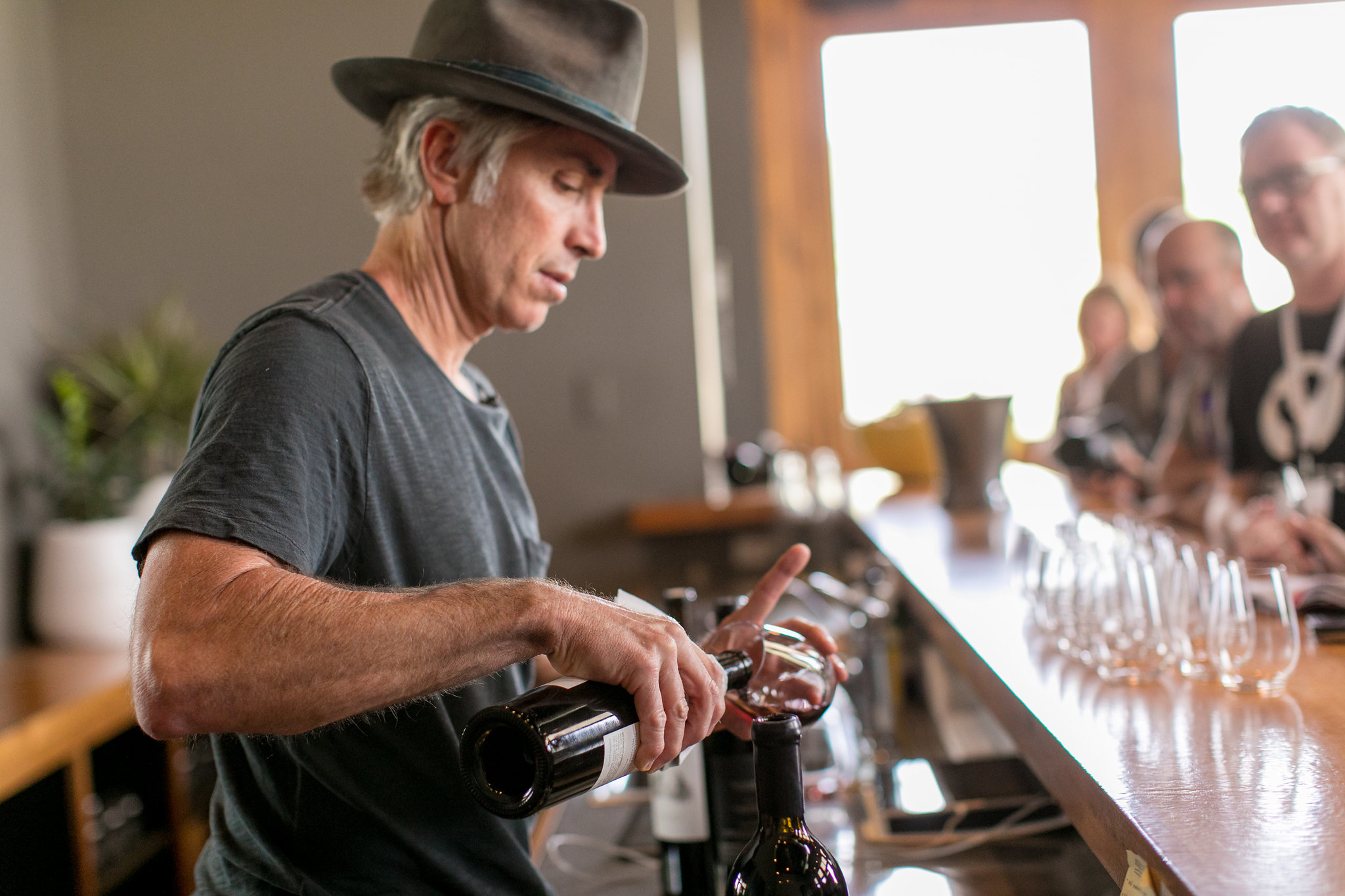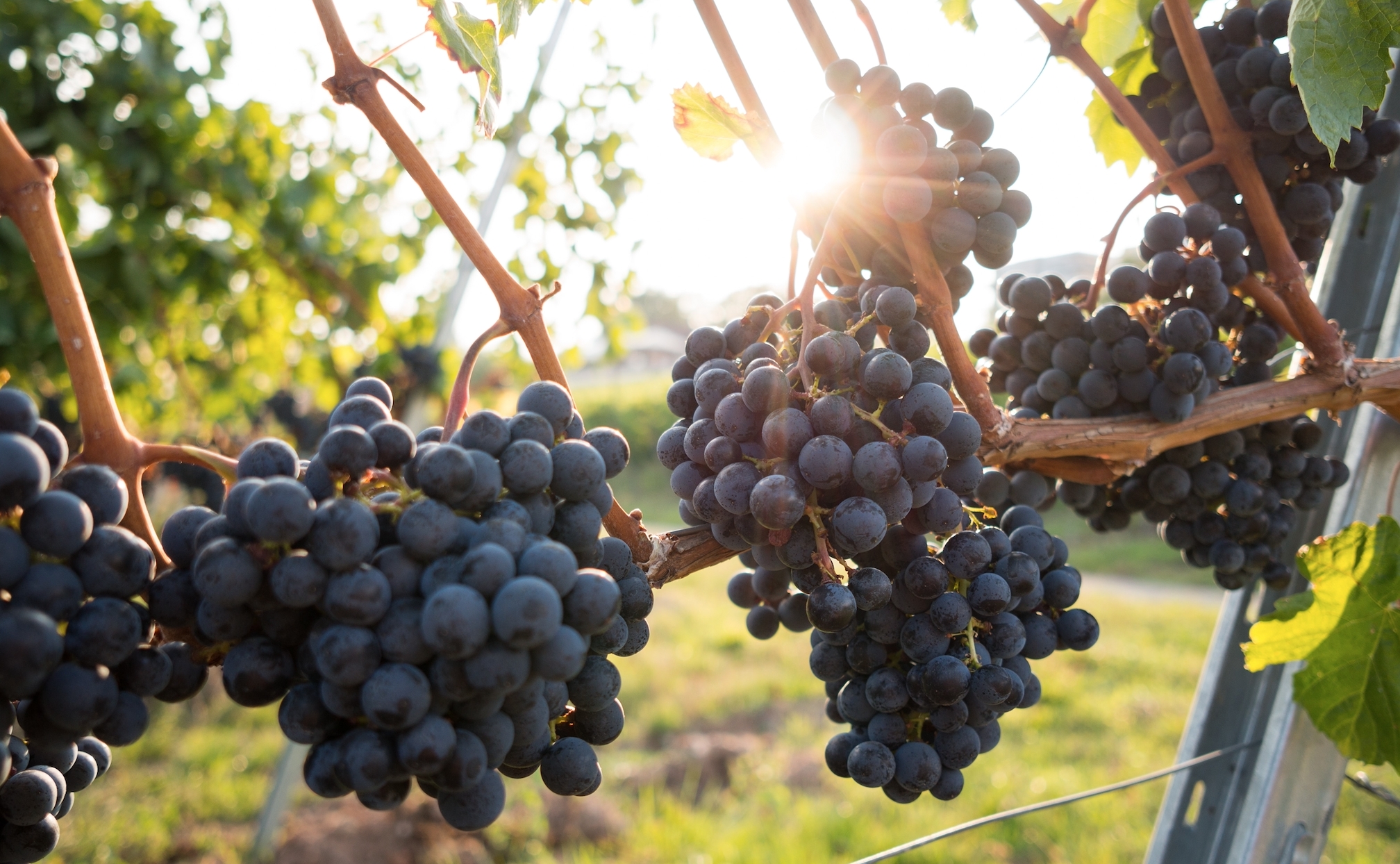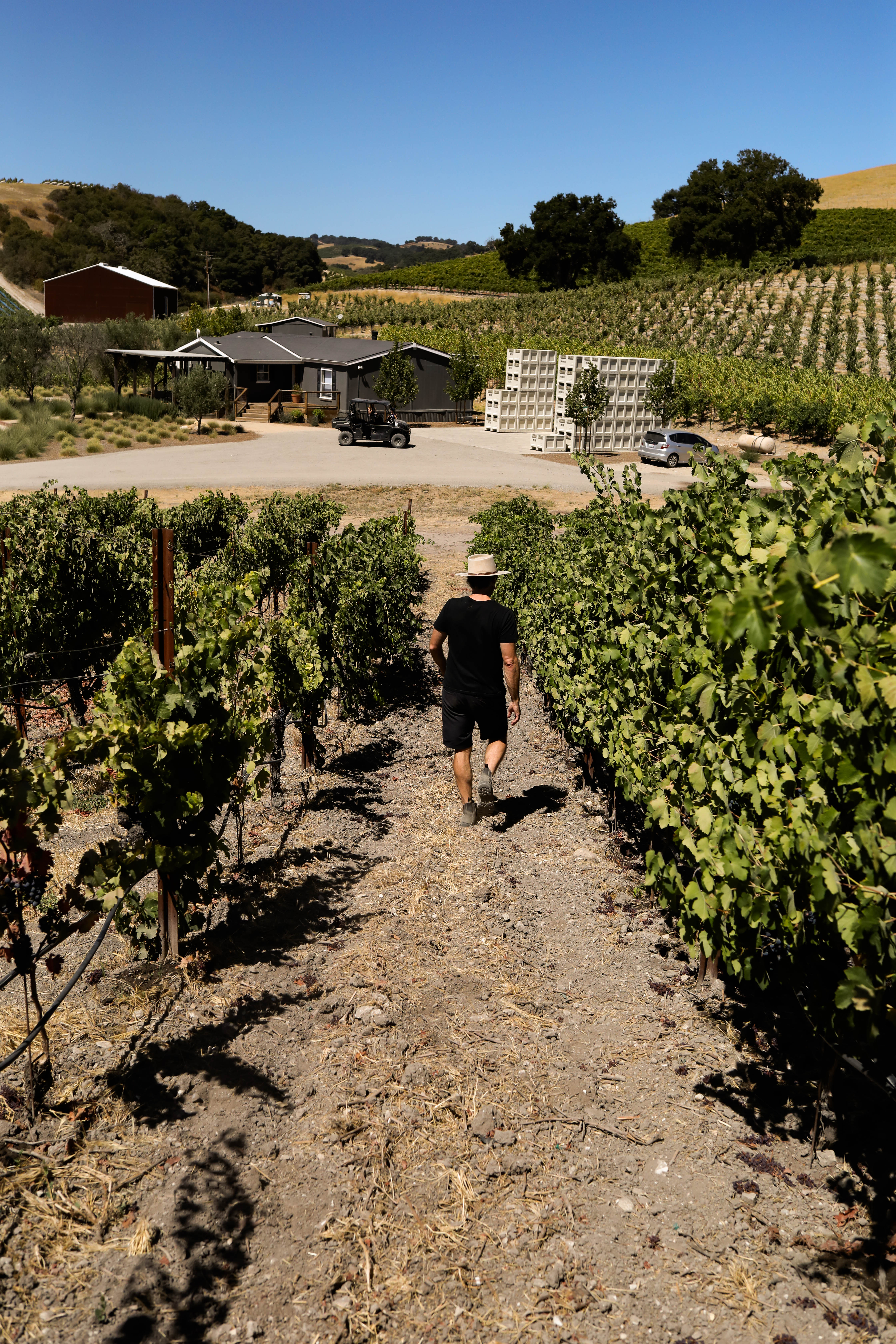Ask winemaker Eric Jensen what he thinks of his vintner forbearers and you will, almost certainly, receive a tirade laden with profanity and glowing with ember-hot contempt.
“The new consumer doesn’t give a shit about some rich fucker in an ascot standing in front of his art collection,” Jensen says to me, his mud-stained cowboy fedora in hand and aviator sunglasses perched on his graying head in the tasting room at Booker Vineyard, his prospering operation a few miles southwest of Paso Robles, California. “Do you hang out with people like that?”
Jensen offers this mini-dissertation on the modern wine scene while wearing dusty riding boots, shorts and a t-shirt featuring that iconic photo of Johnny Cash flipping off the camera. Under the photo the word BOOKER is written in all caps. The rebel attitude of the vineyard he runs couldn’t be more overt.
“Nobody gives a shit about giving a pass to a bunch of white people in Europe who haven’t had to prove shit in a hundred years,” Jensen says. In a cartoon French accent, he mocks established wine gospel. “We’ve been told we have to age this shit. That is a fallacy. A good wine might improve with age, but if a wine needs ten years? You need to go back and learn how to make fucking wine.”
Jensen is full of aphorisms like this.
“Don’t confuse the customer.”
“Just make it yummy.”
“Always trust the women. They have better palates and they don’t fucking lie about it.”
While these may sound like the ego-infused statements of a man buying into his own hype, Eric Jensen isn’t the buzziest winemaker in California’s central coast or even Paso Robles. At the moment, that title probably belongs to his friend Justin Smith of Saxum Vineyards, or perhaps the Lebanese-born brothers Georges and Daniel Daou of Daou Vineyards. The erstwhile Southern California concert promoter-turned-winemaker makes for a fitting central coast mascot though. Jensen’s Storm Olympus, Burn the Gods ethos is pervasive among winemakers in this region — equally remote from San Francisco and Los Angeles.
The irreverence is working. Jensen and his ilk are turning Paso Robles into a wine destination to rival any in America. And they’re giving few f*cks to the establishment along the way.

An honest rebellion suffers no sentimentality, and the winemakers of Paso Robles have no more reverence for the ancient houses of Bordeaux and Chianti than they do for the scrappy upstarts of yesteryear only a few hundred miles to the north, in Napa Valley, who elbowed California wines onto the global stage when the central coast was still a backwater for shitkickers and vintners (like Jensen) living in double-wide home/office trailers.
This is the way of the world. For the kids into Travis Scott, Snoop Dogg might as well be Slick Rick. Or Sinatra.
But what sets Paso Robles apart from Napa Valley et al, beyond just the punk mentality, is a peculiarity in the area’s climate caused by a small but consequential geological formation, a low-lying segment of the Santa Lucia mountain range. Take a seat at Paso Robles’ dive bar, the Pine Street Saloon, and you’re likely as not to find yourself next to a winemaker expounding on the virtues of the Templeton Gap. The same conditions that draw cold air inland off the Pacific and cools the Bay Area is present in Paso Robles year-round, thanks to this phenomenon, which roughly tracks state highway 46 and becomes a veritable wind tunnel of cold air every afternoon.
The difference is that every day before gusts from the Pacific air conditioner come rolling in, Paso Robles, 250 miles south of Napa, gets very hot. This “diurnal swing”—the difference between a given day’s high and low temperatures—is one of the most dramatic of any place in the United States, greater even than the famously wide-ranging night and day temperatures at Burning Man. If you like wine, that is a very good thing indeed. In the sun and heat, photosynthesizing grapevines produce the sugars that yeast turns to alcohol and account for a wine’s sweetness (flavors wine people often refer to as “jammy”). But heat also burns off the acids that make wine tart and lend it a depth of character—unless the temperature in the vineyard drops so far so fast that for long stretches of the day that acid in the grapes is not burning off.
Thanks to this diurnal swing, the wines of Paso Robles are towering high-wire acts that balance sweet, jammy flavors and deep, tart acidity. They’re big wines, but comfortingly, refreshingly simple. Were they software, you’d call them user-friendly. Wine people call wines like this approachable.

The result of the Paso-ethos and the distinct weather is a region brimming with destinations for the unpretentious wine-lover in search of good drink, good food, and novel experiences. This includes newer operations, like Jensen’s Booker Vineyard, and wineries that have been eking it out on the central coast for a hundred years, like Turley Wine Cellars, with its dry-farmed century-old vineyards that produce highly acid zinfandel. Niner Wine Estates, which shares a boundary with Booker (they were once part of the same ranch), was recently declared the best winery restaurant in America by USA Today.
The nearby Hearst Castle — the monumental estate that George Bernard Shaw once described as “what God would have built if he had had the money” — is worth a visit all by itself, but the surprisingly good Three Sisters cuvée, with a big nose and refreshing minerality, make the relatively new-to-the-scene Hearst Ranch Winery worth a visit too. The unapologetic arrivistes of Paso Robles have a secure base in an industrial park south of town called Tin City, where smaller but buzzy operations like Giornata and Field Recordings showcase their innovative approaches to the ancient art of making wine.
As Paso Robles develops, some fear it will lose its rougher, less genteel edge—that it will, in other words, become Napa-fied. The large distances between its wine country and any major urban area (unlike Napa to San Francisco, for example), are a substantial and largely immutable impediment to development like that. But change spares no one and it’s coming for Paso Robles too. In time, the investors with big money will catch on.
Back at Booker Vineyard, Eric Jensen isn’t worried. He shows off his newly excavated wine cave that will substantially elevate his winery as a destination and help him keep up as Paso turns into a full-fledged “destination.” There is to be an elevator down to a plush subterranean tasting room behind a glass wall with vast barrel storage well into the distance carved out of the earth.
After a quick tour, Jensen steps back out into the Paso Robles sun and looks wistfully into the middle distance. He doesn’t seem afraid of the establishment or whatever other changes the world has in store.
“I grew up in a 1,000 square foot house with four girls,” he says with a grin. “To think I have a cave now. Man…”

Uproxx was hosted for this story by Paso Robles Tourism. However, they did not review or approve this story. You can learn more about the Uproxx Press Trip policy here.







